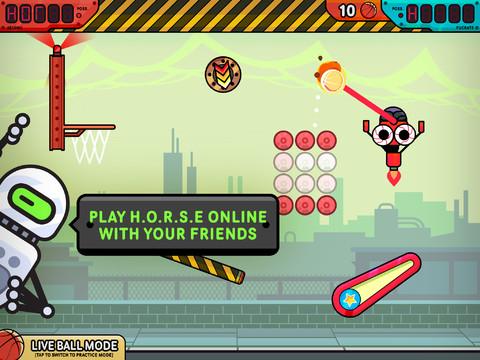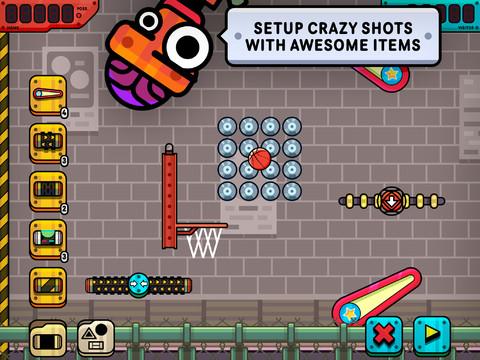- Wondering how to get Monopoly GO! free rolls? Well, you’ve come to the right place. In this guide, we provide you with a bunch of tips and tricks to get some free rolls for the hit new mobile game. We’ll …
Best Roblox Horror Games to Play Right Now – Updated Weekly
By Adele Wilson
Our Best Roblox Horror Games guide features the scariest and most creative experiences to play right now on the platform!The BEST Roblox Games of The Week – Games You Need To Play!
By Sho Roberts
Our feature shares our pick for the Best Roblox Games of the week! With our feature, we guarantee you'll find something new to play!Type Soul Clan Rarity Guide – All Legendary And Common Clans Listed!
By Nathan Ball
Wondering what your odds of rolling a particular Clan are? Wonder no more, with my handy Type Soul Clan Rarity guide.
Gasketball Review
I’ll admit it: I have a bias against sports games. In a genre where “revolutionary” entries are most often named simply by putting a new year in the title, and defined by the addition of ‘more realistic crowd reactions,’ it can become difficult to give supposedly innovative alternatives their due. So know that when I say I’m enamored with Gasketball, there’s something quite special going on.

Welcome to the Space Jam
I’ll admit it: I have a bias against sports games. In a genre where “revolutionary” entries are most often named simply by putting a new year in the title, and defined by the addition of ‘more realistic crowd reactions,’ it can become difficult to give supposedly innovative alternatives their due. So know that when I say I’m enamored with Gasketball, there’s something quite special going on.
From the indie duo at Mikengreg who brought us the wonderful Solipskier, Gasketball is yet another offbeat combination of genres whose whole is greater than the sum of its parts. In this case, through some simple-but-brilliant reverse engineering. You see, every step of the way, Mikengreg seem to be taking that sports game staleness to task, asking players to question what would happen if the genre embraced a commitment to be much less realistic.
At its core, Gasketball revolves around the game of H.O.R.S.E – the classic shot-matching competition that pits you against your opponent to see who will fail to copy (and sink) the other’s basket first. Translated off the court and onto the screen, this means you’ll need to flick a ball into the basket by bouncing it off elaborate obstacles in a designated order. There’s a story mode where you face off against an AI opponent, an asynchronous mode to take your skills – or lack thereof – online, and 1-on-1 play, which gives you the chance to school a real-life friend or enemy.
And yet the game also takes cues from The Incredible Machine. And Portal. And a neon sign store. Gasketball may use basketball as its muse, but this is a game that pays homage so much more than sport, abandoning the innovation-blocking need for fidelity in favor of a die-hard commitment to fun. Those obstacles I told you about? Buzz saws, portals, gravity reversal switches, oversized pinball flippers, and so much more. Think Harlem Globetrotters meet mad science.
In single player mode, your opponent is a smarmy robot “baller,” who gets you used to the proceedings by setting up trick shots using the game’s stable of items and waiting to see what you’ve got. Because he can’t lose (cheater), h, o, r, s, and e are all replaced by five shot chances. High scores are determined by how many balls are left, how many of the level’s obstacles you successfully used to sink the ball, and whether not any of your shots were net-heavy “swishes.” Take more than five shots? And you die! Okay, fine…you just don’t get a star rating.
By in large, Mikengreg knocks this mode out of the park (he says, sinking the sports metaphor from half court), delivering a deft mixture of their game’s tools to provide you with shots you won’t believe you’re sinking. And because there’s only ever one mandatory obstacle you have to start with, and a clear end point for your ball, all the tools in the middle emerge as optional ways to test your judgement of distance, physics, and precision.
Gasketball therefore ends up playing in that wonderful space where choice doesn’t paralyze, but instead sets you free to come back and find new combinations over and over again. Admittedly, matching your mechanical baller’s shots tool-for-tool sometimes exposes the game’s frustrating design choices, as Mikengreg demands precision in a way that proves impossible except through repeated trial and error of your shot strength and angle. But that’s an exception and not a rule, and you’ll mostly find yourself revelling in how surprisingly well pinball flippers interact with portal devices, or how satisfying it is to get a swish using a conveyor belt.
On the other side of the coin (or menu screen, whatever you call it is fine), the game’s two player mode is a frantic, ridiculously competitive party that hasn’t been getting much attention in the early reviews eeking out for the game. So let me say this: 1-on-1 mode is far and away my favourite experience. And that’s with the knowledge that every mode is a great experience. Abandoning the slowly paced, shot-for-shot formula of single player and H.O.R.S.E mode, 1-on-1 has you sharing a screen around a mutually agreed upon court setup, and then just…hurling balls at your net.
There’s really no other way to put it, but Mikengreg hit on a stroke of brilliance here. 1-on-1 is the perfect, light party game that proves yet again why there need to be more experiences that take place around one iPad; nothing beats seeing your score tick higher and dreading your opponent’s ascent…all out loud, as they sit right there with you.
If you don’t have anyone sitting right there with you, I apologize – and not for the obvious pitying reasons. In the game’s pre-release form, I was unable to do thorough testing of the asynchronous online mode, except to observe its extraordinarily sleek interface, which ultimately continues the game’s trend of polish throughout. Gasketball is probably best described as “steampop,” an unlikely mashup of 80s neon and 2080s robotics that works so well because it couldn’t possibly.
And ultimately, this is Gasketball’s crowning achievement. By audaciously combining two genres of play that designers haven’t let themselves believe could work, it delivers on a premise that it invents. In true Mikengreg tradition, it seems, the game does what games in general are supposed to: craft experiences you can’t find anywhere else.

The good

The bad
More articles...
Monopoly GO! Free Rolls – Links For Free Dice
By Glen Fox
Wondering how to get Monopoly GO! free rolls? Well, you’ve come to the right place. In this guide, we provide you with a bunch of tips and tricks to get some free rolls for the hit new mobile game. We’ll …Best Roblox Horror Games to Play Right Now – Updated Weekly
By Adele Wilson
Our Best Roblox Horror Games guide features the scariest and most creative experiences to play right now on the platform!The BEST Roblox Games of The Week – Games You Need To Play!
By Sho Roberts
Our feature shares our pick for the Best Roblox Games of the week! With our feature, we guarantee you'll find something new to play!Type Soul Clan Rarity Guide – All Legendary And Common Clans Listed!
By Nathan Ball
Wondering what your odds of rolling a particular Clan are? Wonder no more, with my handy Type Soul Clan Rarity guide.








 “
“